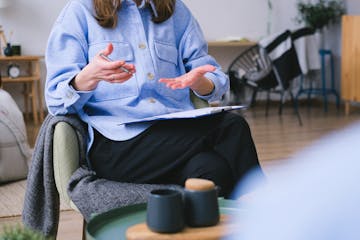The human ability to imagine, create and shape realities is one of the most extraordinary characteristics of our species. Since time immemorial, we have been able to construct internal and external worlds, shaping our experiences and beliefs in surprising ways. In this article, we will explore the idea that we are creators of realities, analyzing how this power influences our psychology, behavior and well-being.
The creative mind: Building internal realities
Our mind is a laboratory of constant creation, where we imagine, dream and shape our internal realities. By closing our eyes, we are able to visualize entire worlds, relive past memories, and anticipate possible futures. This ability to create mental representations is fundamental to our survival and adaptation, as it allows us to plan, solve problems and make informed decisions.
Cognitive psychologists have closely studied this creative process, discovering that our minds tend to to fill information gaps with assumptions and imaginative constructions. For example, when we remember a past event, we do not recover an exact copy of the experience, but rather a subjective reconstruction based on fragments of information stored in our memory.
The influence of beliefs and expectations
Our beliefs and expectations play a crucial role in constructing our internal realities. When we firmly believe in something, our mind tends to filter information selectively, favoring those that confirm our beliefs and discarding those that contradict them. This phenomenon, known as confirmation bias, can influence how we interpret the world around us and the decisions we make.
For example, if someone has the belief that they are unable to overcome a challenge, Your mind is likely to focus on the evidence that supports that belief, ignoring contrary evidence that might indicate otherwise. This tendency to seek confirmation can have significant consequences on our self-esteem, motivation, and ability to face new challenges.
From imagination to reality: Creating our external environment
Our ability to imagine and creating is not limited to our mind, but extends to our external environment. Throughout history, humans have been able to transform nature, build cities, invent technologies, and shape culture in unimaginable ways. This ability to create external realities has had a profound impact on our evolution as a species and the way we live today.
The influence of the environment on our well-being
Our environment physical and social has a significant impact on our mental health and emotional well-being. Environmental psychologists study how the design of spaces, air quality, the presence of nature and other environmental factors influence our health and happiness. For example, exposure to green and natural environments has been shown to have positive effects on mood, concentration and stress reduction.
In addition, our social and cultural environment also plays a crucial role in construction of our identity and the way we relate to others. Our interactions with friends, family, coworkers, and strangers shape our beliefs, values, and behaviors, creating shared social realities that influence our view of the world and how we interact with it.
The power of visualization and creativity in psychology
Visualization and creativity are powerful tools that can be used to improve our mental health, overcome obstacles, and achieve our goals. Psychologists have investigated how these practices can influence our psychology and well-being, discovering that positive visualization can have beneficial effects on self-esteem, motivation, and emotional resilience.
Creative visualization and self-efficacy
Creative visualization is a technique that involves vividly imagining desired situations, with the aim of strengthening our self-efficacy and self-confidence. By visualizing ourselves reaching a goal or overcoming a challenge, our brain activates neural circuits associated with the execution of that task, which can improve our performance and motivation to achieve said goal in reality.
In addition, creativity in itself can be a powerful tool for stress management, problem solving, and expressing emotions. By engaging in creative activities such as painting, writing or music, we can channel our emotions and thoughts in a constructive way, promoting self-expression and self-knowledge.
Final conclusions: The importance of being aware of our capacity creator
We are creators of realities, both internal and external. Our mind has the power to imagine, build and transform, influencing not only our perception of the world, but also our way of interacting with it. It is essential to be aware of this creative capacity and use it consciously and positively to improve our mental health, enhance our resilience and achieve our goals.
By recognizing our ability to create realities, we can cultivate creativity, positive visualization and self-efficacy, strengthening our emotional resilience and our ability to face the challenges of daily life. After all, we are the architects of our own reality, and it is our duty to take the reins of our creative process and build an internal and external world that reflects our deepest values, dreams and aspirations.


